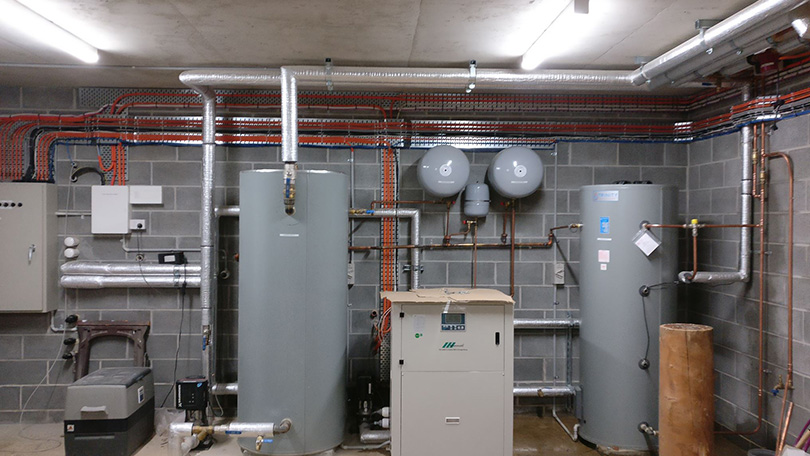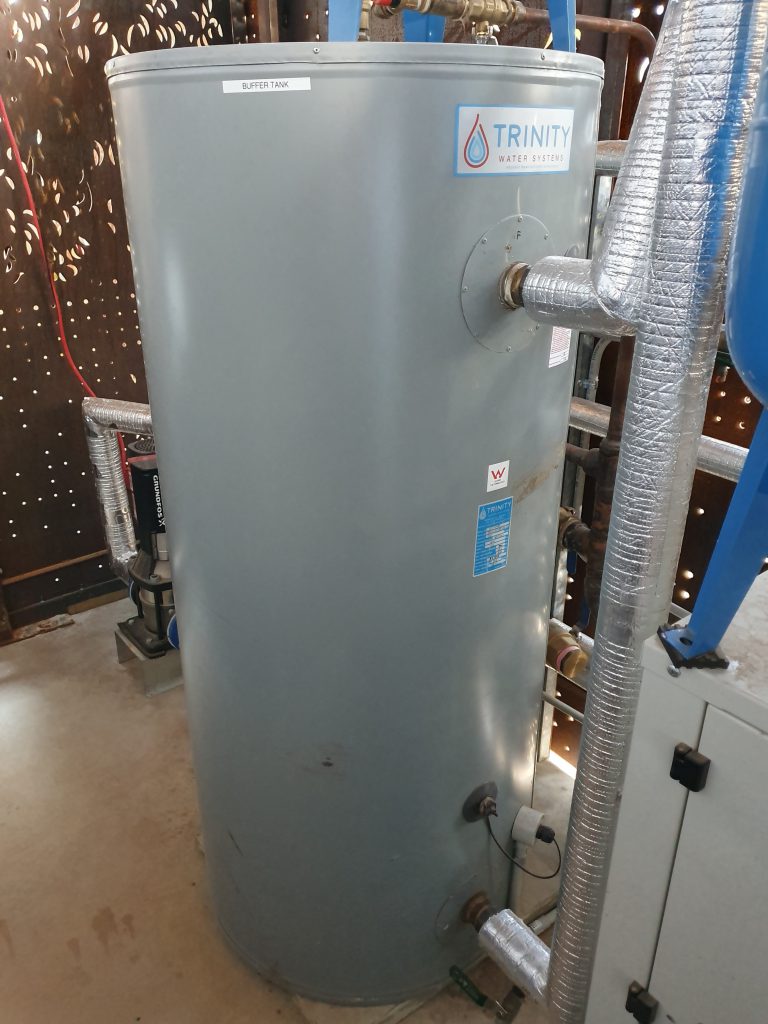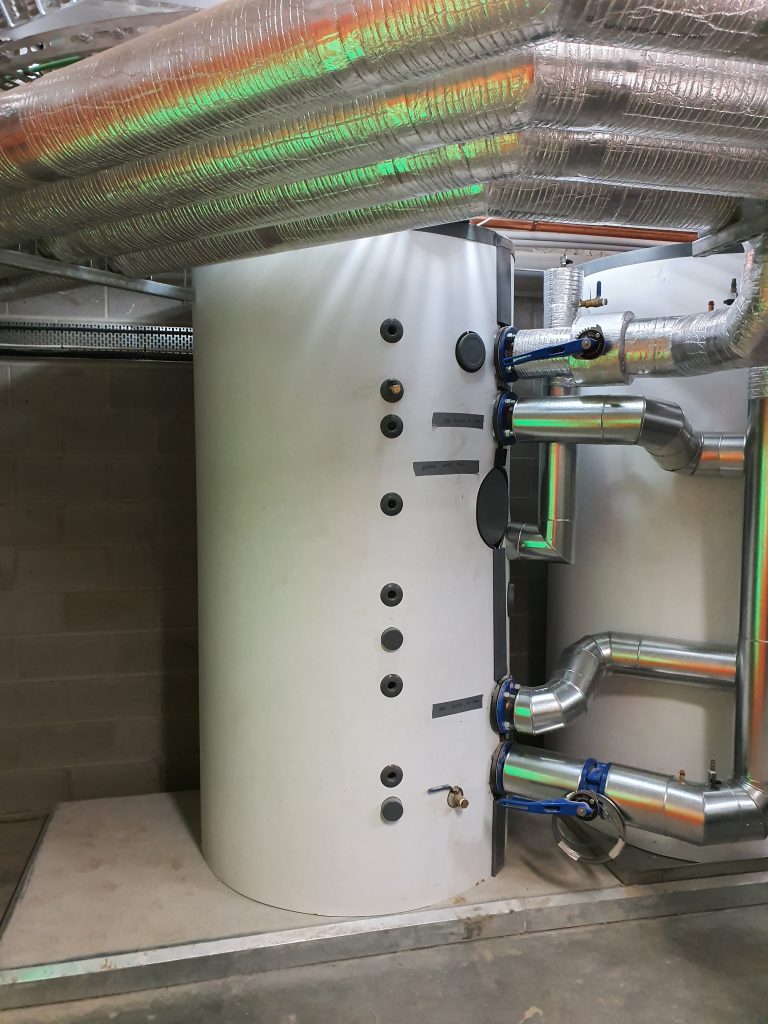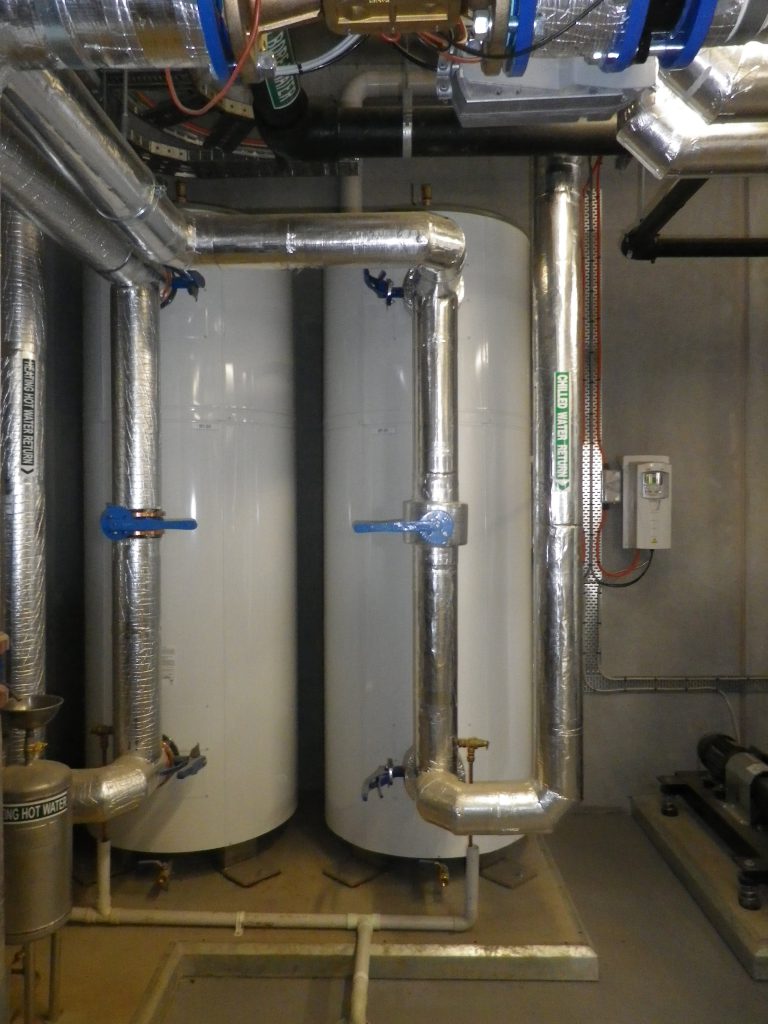Thermal Energy Storage
Thermal Energy Storage is typically when heated or cooled water is stored in tanks for the purposes of utilising the stored energy after the time of energy generation. This can occur on a small scale, such as a solar hot water tank in a home, or on a large scale, with tanks that can heat and cool whole districts or even cities.
Solar, gas, biomass and other energy inputs can be used to generate the heating/cooling storage, typically leveraging low cost and/or off-peak energy sources. As a ‘load shifting’ resource, thermal energy storage can be a valuable part of the energy mix.
Geothermal systems are also a type of thermal energy storage, as a Ground Heat Exchanger assists with storing energy in the body of earth in which it is installed. Although not often considered as a thermal energy storage medium, we consider that the ground is the ultimate energy storage device: a thermal battery that can be as large as any site allows.
Essentially, a geothermal system takes heat from inside a building in summer and stores it in the ground, ready for winter. Likewise, in winter, the system will extract heat from the ground and deliver it to the building for heating.
Whether a water tank or the ground is used as thermal energy storage, the results can be very effective to achieve sound energy efficiency gains for heating and cooling when designed correctly.




